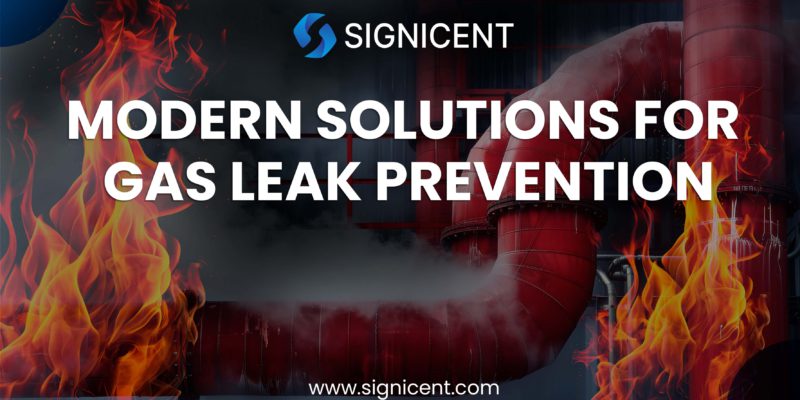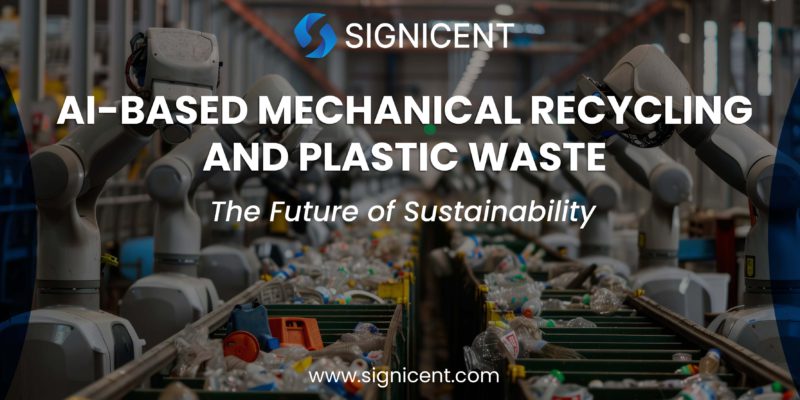In our world, where industries drive progress and innovation across various sectors, many rely on industrial gases to power their products and operations. From manufacturing to energy production, these gases are integral to the machinery and processes that fuel our modern economy. However, the silent threat of gas leaks looms large, as outdated or inadequate detection systems fail to alert us to these invisible hazards. Recently, several areas have faced severe repercussions due to malfunctioning sensors and inactive alarms, leading to dangerous gas leaks.
These leaks not only harm the environment but can also cause serious health issues for people living nearby. In some cases, these leaks have even led to major accidents. This situation highlights the urgent need for better gas leak detection technologies to prevent such problems and protect both people and the environment.
Signicent conducts technology landscape analysis to help clients understand the current state of gas leak prevention technologies. This covers market trends, competitor solutions, and technological breakthroughs to inform strategic decisions.
Significant Challenges
Despite the technological advancements, gas leak detection still faces several challenges:
- Aging Infrastructure: Many systems rely on outdated pipelines and equipment, complicating the integration of modern detection technologies and necessitating significant upgrades.
- False Alarms: False alarms can disrupt operations and incur costs, presenting a challenge in balancing sensitivity and accuracy.
- Environmental Conditions: Harsh conditions like extreme temperatures or high humidity can impact the performance of detection systems, making reliable operation in diverse environments a constant challenge.
- Health Risks: Leaking gases can cause immediate health issues like nausea and dizziness, and long-term conditions including respiratory diseases and cancer, posing severe health hazards.
Each year Signicent provides consultancy to hundreds of organizations to help transform their innovations to value.
Understanding the main causes of Gas Leaks: Key Factors
Gas leaks occur due to a variety of reasons, each contributing to the potential for hazardous incidents:
- Poor Maintenance Practices: Inadequate upkeep can result in undetected damage, heightening the risk of leaks.
- Faulty Installation: Improper installation of gas systems can lead to weak connections and leaks.
- Operational Errors: Human mistakes in handling or maintaining gas systems can cause leaks.
- Natural Disasters: Events like earthquakes and floods can damage gas pipelines and lead to leaks.
- Third-Party Damage: Construction and excavation activities near gas lines can inadvertently cause leaks.
- Pressure Changes: Fluctuations in gas pressure can stress pipelines, leading to leaks.
- Material Defects: Defective materials used in gas systems can fail under normal conditions, causing leaks.
Addressing these root causes is vital for developing effective gas leak detection and prevention strategies.
We offer Freedom to Operate (FTO) analysis to ensure clients can develop and market gas leak prevention technologies without infringing existing patents, minimizing legal risks.
Latest Advancements and Innovations
Infrared Imaging: This technology uses thermal cameras to detect the heat emitted by gases, effectively identifying leaks in hydrocarbon-based gases and other substances.
Ultrasonic Sensors: By capturing the sound waves produced by gas leaks, ultrasonic sensors provide real-time alerts and accurate detection, even in noisy environments.
Fiber Optic Sensors: Uses fiber optic cables to monitor temperature changes and vibrations along pipelines, detecting gas leaks by identifying disturbances or fluctuations in the optical signal.
Laser gas detection is ideal for scenarios requiring precise, long-range monitoring, especially in hazardous environments where traditional methods may fail. It excels in detecting specific gases like methane in large open areas or in situations where rapid response is critical, such as in pipelines, refineries, and storage facilities.
Our design patent search service identifies relevant design patents in gas leak detection technologies, helping clients secure unique design rights and avoid potential infringement issues.
AI-driven algorithms analyze vast amounts of data, identifying patterns to distinguish between real leaks and false alarms. This precision helps in minimizing disruptions and enhances the reliability of gas detection systems.
- Siemens recently introduced AI technology that significantly reduces false alarms in gas leak detection, improving overall safety and efficiency.
- Emerson’s new sensors are designed to survive tough climatic conditions, performing efficiently from -40°C to 85°C with humidity levels ranging from 0% to 100%. They are made of corrosion-resistant materials and provide dependable gas detection and long-term protection in a variety of harsh environments.
- Honeywell recently introduced two new Bluetooth®-connected gas detectors designed to provide continuous monitoring for hazardous gases, even in challenging conditions like fog, rain, and snow. These advanced detectors enhance safety across oil and gas, petrochemical, and chemical industries, ensuring the protection of workers and industrial sites in various weather scenarios.
Signicent has effectively conducted technology gap analysis in gas leak prevention, identifying deficiencies and providing strategic recommendations to enhance technological capabilities and address gaps.
Benefits of Using Gas Detection Technologies:
- Early Detection: Technologies like infrared imaging and laser detection identify gas leaks early, preventing potential hazards and reducing response times to address issues before they escalate.
- Enhanced Safety: Advanced chemical and electrochemical sensors improve safety by accurately identifying toxic or flammable gases, protecting workers and facilities from harmful exposure and accidents.
- Operational Efficiency: Technologies like fiber optic sensors and AI-driven systems streamline monitoring processes, optimizing maintenance schedules and reducing operational disruptions caused by gas leaks.
Market Research:
Based on Signicent’s market research, the Global Gas Leak Detection Technology Market is forecasted to reach values within these projected ranges.

Our market intelligence provides insights into market trends and competitor intelligence in the gas leak prevention sector. This information supports informed decision-making and keeps clients ahead of competitors.
Key players:
Signicent is leading the way in the transformation of gas leak detection technology, helping companies pinpoint and adopt the most effective and innovative gas leak detection solutions tailored to their needs. Our comprehensive market research and insights into emerging technologies empower our clients to implement cutting-edge, sustainable solutions that adhere to the highest safety standards.
About Signicent LLP
We assist businesses globally in their technology innovations, R&D, new product development, patents, valuation, product commercialization & market research needs.
Services Offered:
- Technology Intelligence
- Market Research
- Patent Landscape
- Technology gap analysis
- Design Patent Search
- Portfolio Analysis
- Freedom to operate
- Bio Sequence Search
- Innovation pipeline identification
- Chemical Structure Search
- Patent Invalidity Search
- Manufacturers Search/ Supplier search
- Patent Licensing Services
Elevate your Innovation and Research with Signicent’s cutting edge approach to assist you with Technology and Market related matters alongside the IP aspect of the analysis.


